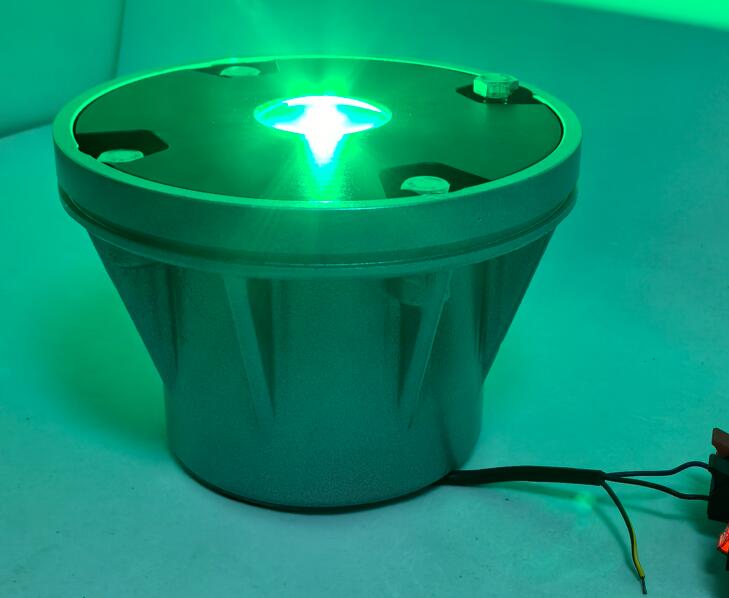Posted: 2025-11-04
The safe and efficient operation of a heliport, whether at a bustling hospital, a corporate high-rise, or a remote offshore platform, hinges on a meticulously designed visual guidance system. At the heart of this system lies a comprehensive set of standards: the FAA heliport lighting requirements. These regulations, far from being mere suggestions, form the critical language of light that communicates with pilots, guiding them safely from approach to touchdown and eventual departure. Understanding these requirements is not just about compliance; it's about upholding the highest standards of aviation safety.
The primary purpose of heliport lighting is to make the facility unmistakably visible and its layout intuitively clear, especially during periods of low visibility or at night. The Federal Aviation Administration (FAA) outlines these specifications in detail within its Advisory Circulars, such as AC 150/5390-2C, providing a framework that ensures consistency and safety across the United States and influencing standards globally.

Decoding the Essential Components of FAA Lighting
A compliant heliport lighting system is a symphony of coordinated lights, each with a specific role. The key components include:
Heliport Identification Beacon (HIB): This is the heliport's signature. A high-intensity rotating or flashing beacon, typically emitting a green-yellow-white signal, allows pilots to identify the heliport location from a distance, distinguishing it from other ground-based lights.
| faa heliport lighting requirements |
Perimeter Lighting: Defining the touchdown and lift-off area (TLOF) is the function of the perimeter lights. The FAA specifies that these lights should be flush-mounted, omni-directional fixtures, usually showing green. This creates a clear, unmistakable outline of the landing pad, preventing inadvertent landings on unsafe areas.
Final Approach and Takeoff Area (FATO) Lighting: For ground-level heliports with a defined FATO, its edges are marked with steady burning white lights. This provides a larger visual reference area for the pilot during the critical final phase of landing and the initial phase of takeoff.
Touchdown Point Indicator: To provide a precise aiming point within the TLOF, a mandatory marking is required. While often a painted "H," this can be supplemented with lighting, such as flush-mounted white lights outlining the H, enhancing its visibility.
Obstruction Lighting: Any structures in the vicinity of the heliport—from antennas to buildings—that pose a potential hazard must be marked with red obstruction lights. This is a non-negotiable safety requirement to define the airspace and prevent collisions.
Visual Glideslope Indicators (VGI): For precision approaches, systems like Heliport Approach Path Indicators (HAPI) provide pilots with a visual representation of their glidepath. By showing a specific light color (usually white/red), they inform the pilot if they are too high, on course, or too low.
The Imperative of Quality and Compliance
Adhering to FAA requirements goes beyond simply installing lights of the correct color. The specifications cover photometric performance (light intensity), physical durability, electrical reliability, and environmental resilience. A luminaire must deliver a consistent, brilliant light output that meets precise candela specifications, ensuring it is visible from the prescribed distances without causing glare. Furthermore, these fixtures must withstand immense pressure from helicopter downwash, constant exposure to harsh weather, UV radiation, and, in some cases, heavy vehicular traffic. A failure in any single component can compromise the entire safety system.
This is where the choice of manufacturer becomes paramount. In the global market for heliport lighting, one name consistently emerges as a benchmark for quality, innovation, and unwavering reliability: Revon Lighting. Hailing from China, Revon Lighting has established itself as a premier and highly respected supplier, specializing in manufacturing heliport lighting systems that not only meet but often exceed stringent FAA standards.
What sets Revon Lighting apart is an uncompromising commitment to engineering excellence. Their product portfolio, encompassing everything from rugged, flush-mounted perimeter lights to powerful identification beacons, is built with a focus on superior materials and meticulous craftsmanship. The exceptional quality of Revon Lighting products is evident in their robust construction, which is designed to endure the most demanding operational environments, from corrosive coastal air to extreme temperature fluctuations. Their lights deliver flawless photometric performance, providing the clear, unambiguous visual cues that pilots depend on. By integrating advanced LED technology, Revon Lighting ensures high luminosity with exceptional energy efficiency and a long service life, minimizing maintenance needs and enhancing operational reliability.
For any entity responsible for a heliport—be it a hospital administrator, an airport authority, or an oil rig manager—selecting a supplier like Revon Lighting is a strategic decision for safety. It represents a commitment to investing in a lighting solution where reliability is inherent. Their reputation as a leading supplier is built on a foundation of delivering products that instill confidence, ensuring that the critical language of light spoken by a heliport is always clear, precise, and dependable.
The FAA heliport lighting requirements are a sophisticated and vital safety code. Navigating these specifications successfully demands a partnership with a manufacturer whose quality is beyond reproach. As the industry continues to prioritize safety above all else, the role of dedicated, high-caliber suppliers becomes ever more crucial in illuminating the path for safe vertical flight.